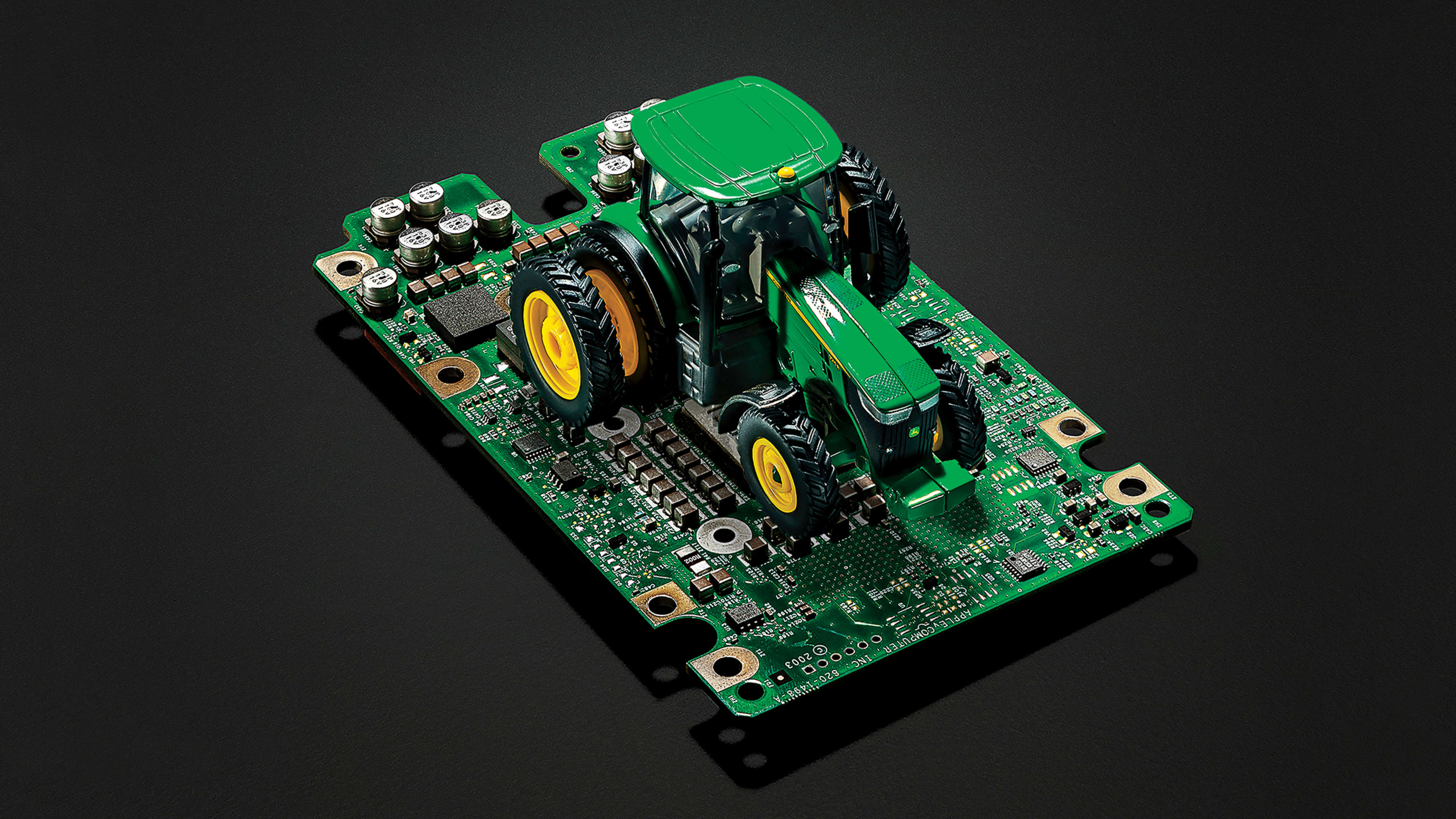While the buzz around 5G is often focused on smartphones (and the technology’s promise of lag-free gaming and streaming), the cellular technology stands to hypercharge industries far beyond entertainment. With its high bandwidth, low latency (i.e., the ability to transfer lots of data with minimal delay), and high reliability, 5G is faster and more dependable than 4G, and so robust that it can replace wired connections—bringing everything from factory robots to fleets of autonomous vehicles online.
Also poised for big change is agriculture. Sensors and artificial intelligence could take some of the guesswork out of nature’s cycles, allowing farmers to remotely monitor weather patterns, livestock wellness, and soil nutrients, while autonomous driving and cloud computing could make equipment more efficient.
“Our ability to have machines sending data in both directions is really important,” says Lane Arthur, John Deere’s director of digital solutions. Add to it the fact that the U.S. farming industry has lost roughly 7 million workers since the 1950s, and you have a new frontier for Silicon Valley’s problem solvers: the farm of the future.
5G by the numbers
5x: How much faster 5G’s initial peak speeds will be, compared to 4G (aka LTE)
Recognize your brand’s excellence by applying to this year’s Brands That Matter Awards before the early-rate deadline, May 3.
